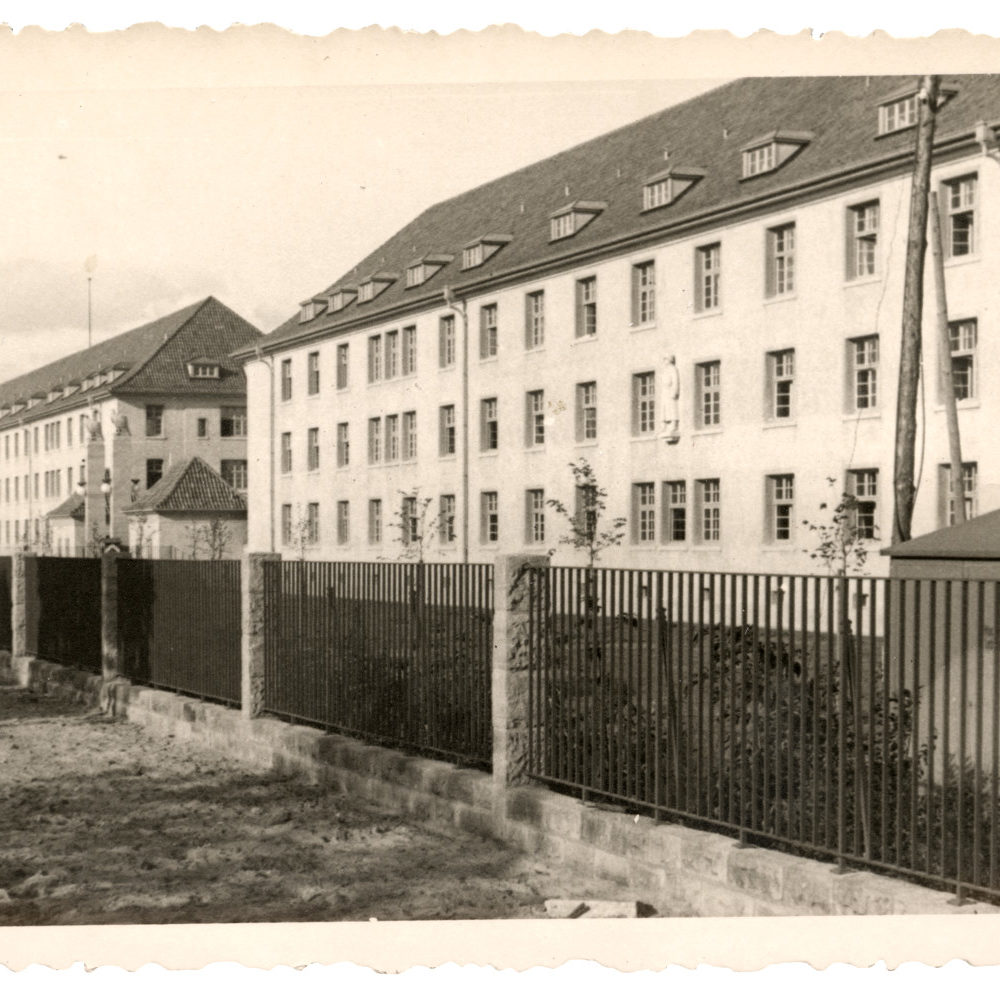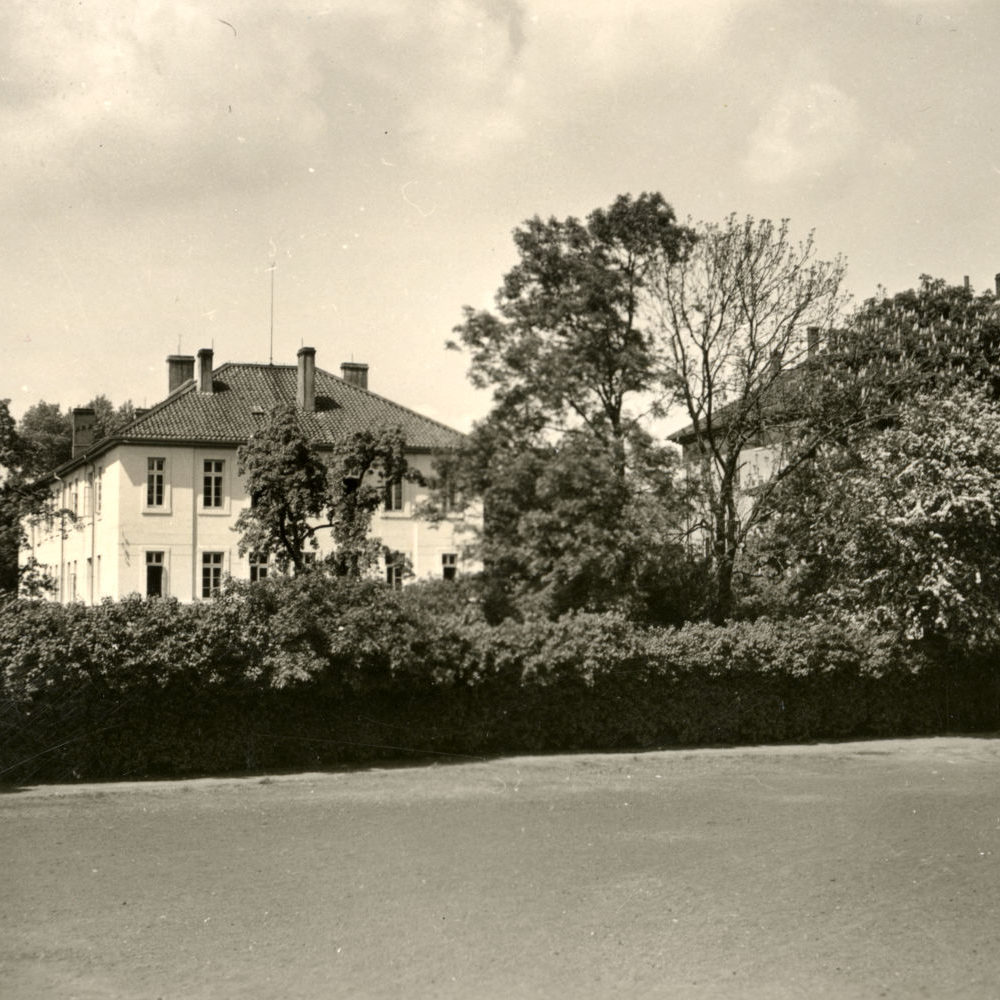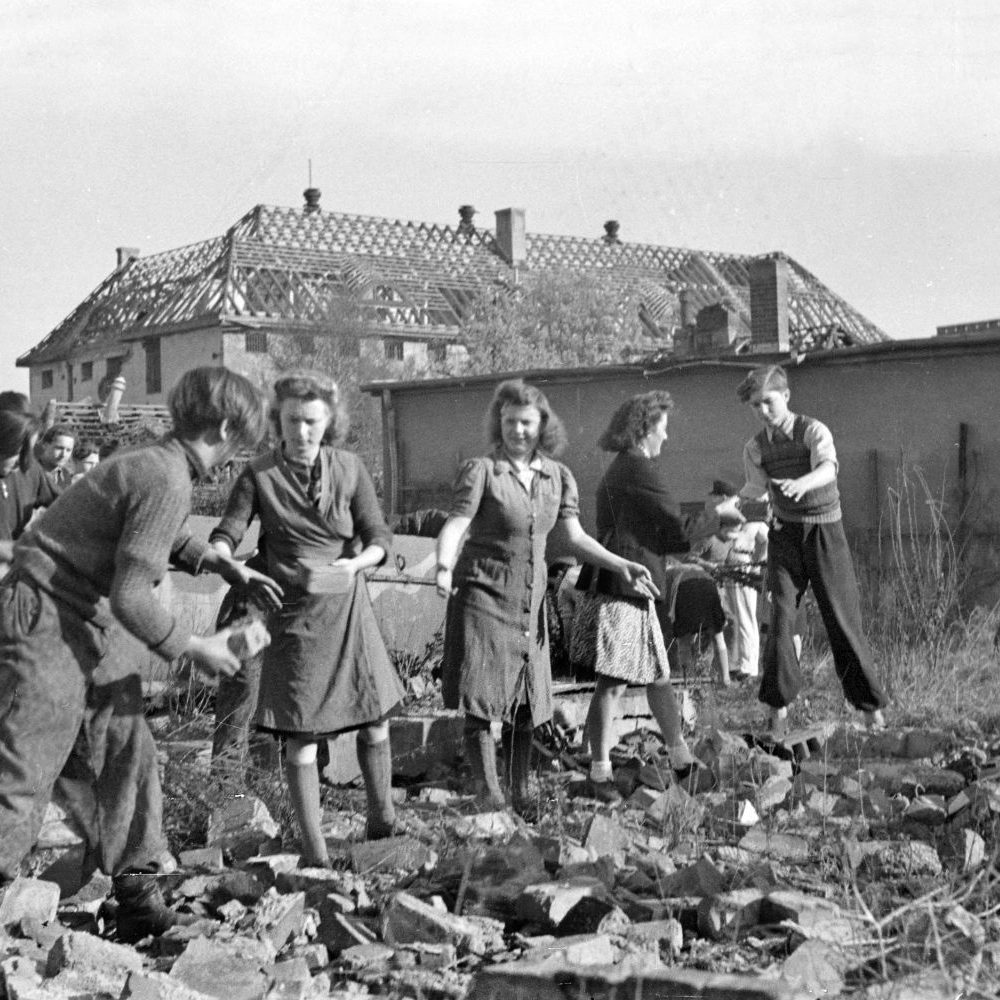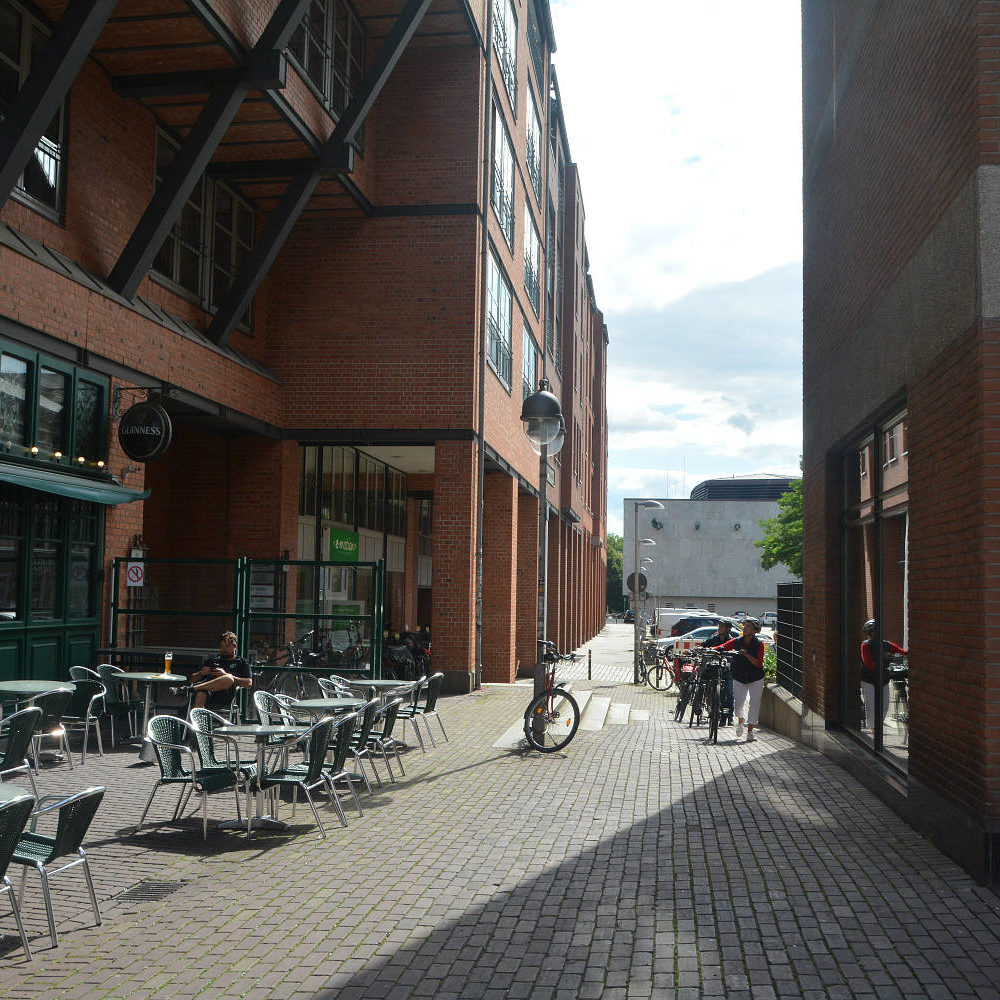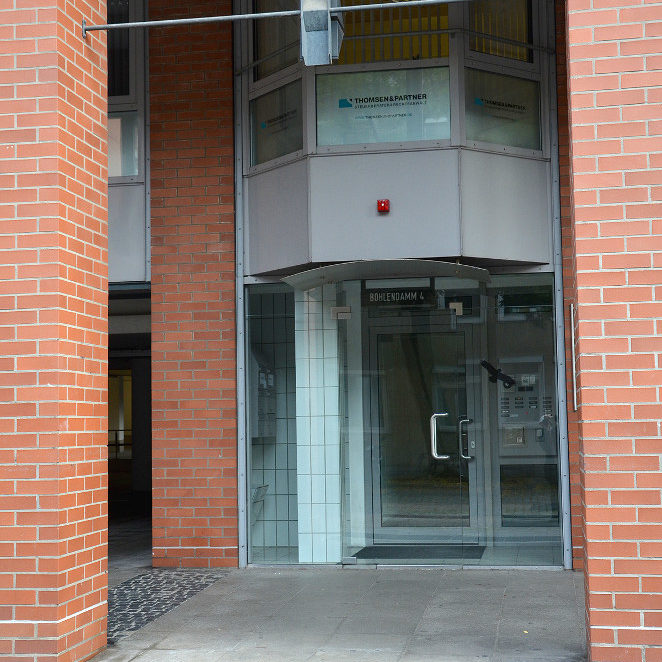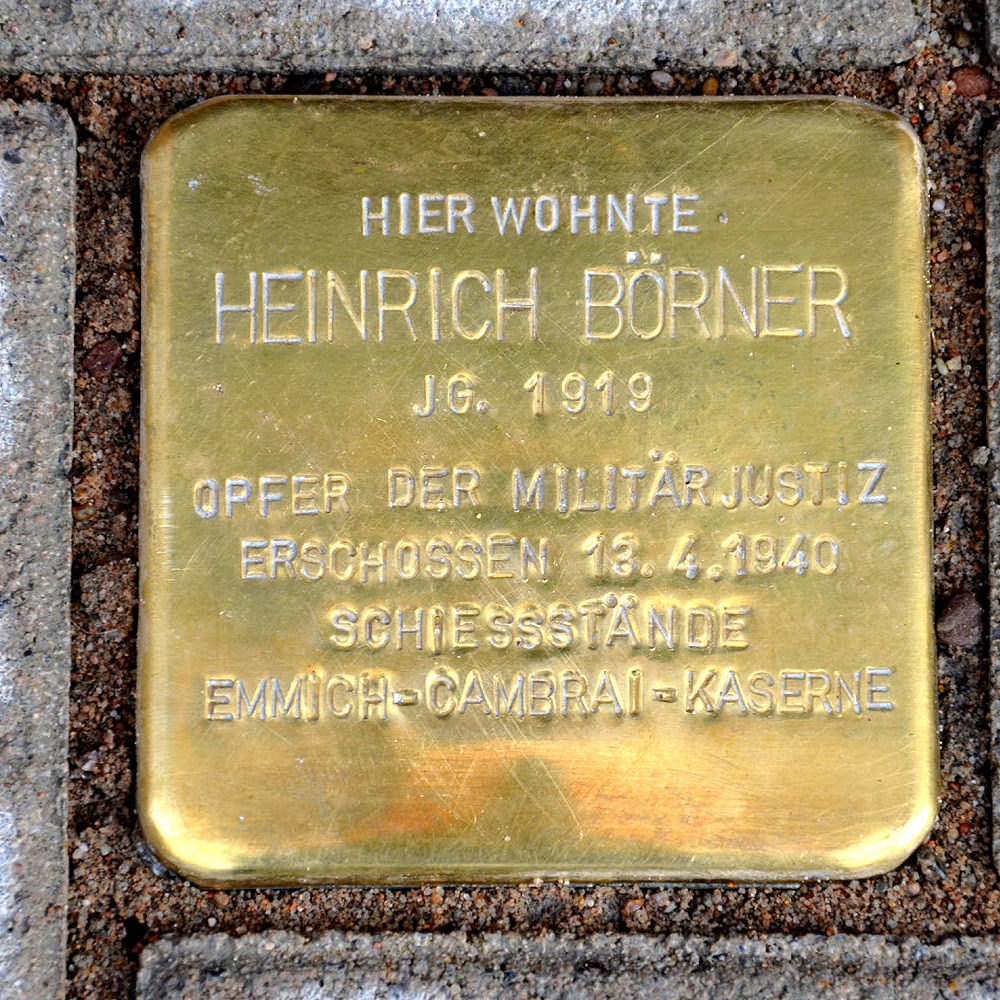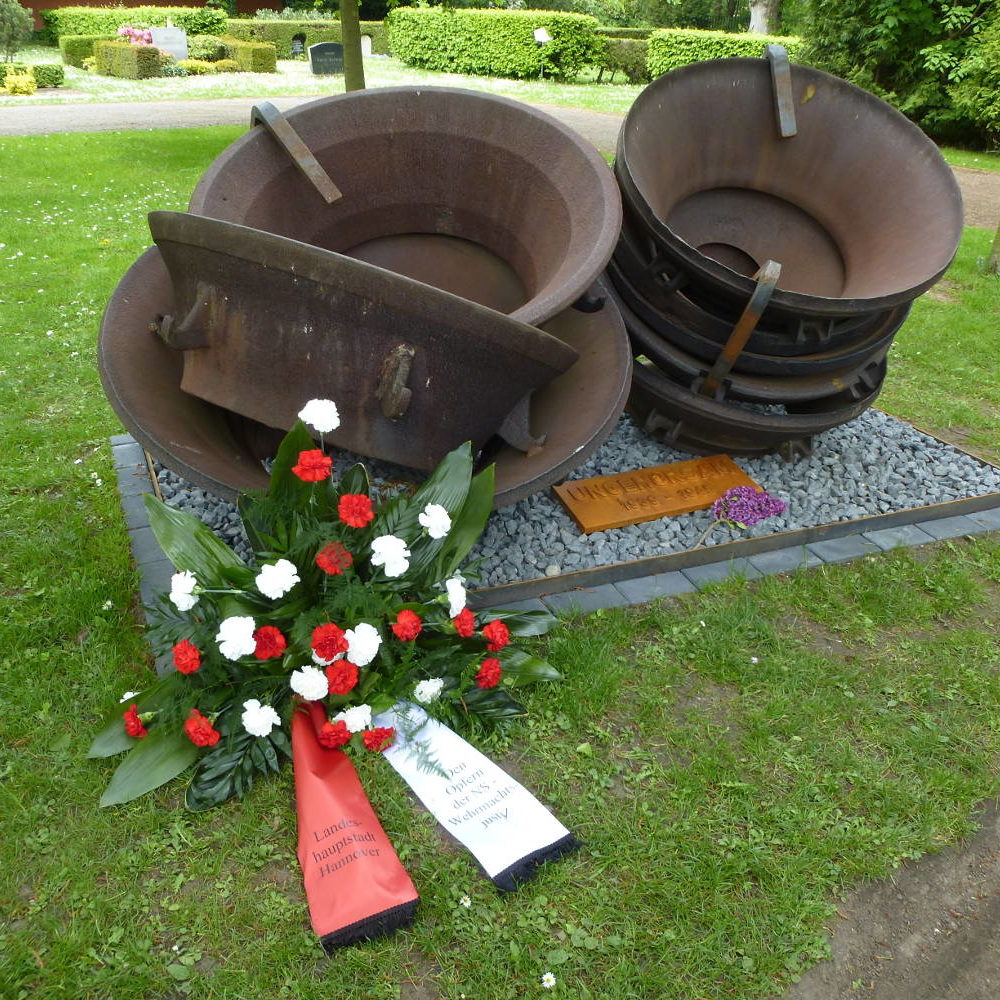The family of the farm labourer Heinrich Börner lives in Hanover’s Altstadt [Old Town]. When he changes jobs and works elsewhere, he remains registered with the police at this address. At the start of the Second World War, the twenty-year-old is drafted into the Wehrmacht [armed forces]. The following year, a military court sentences him to death; he dies on a firing range on Vahrenwalder Heide, just one of the many victims of German military justice.
![Hanover: Note of the cause of death on Heinrich Börner's card in the "Heldenkartei" [Heroes' Card Index] in Hanover City Archives. Hanover: Note of the cause of death on Heinrich Börner's card in the "Heldenkartei" [Heroes' Card Index] in Hanover City Archives.](https://zukunft-heisst-erinnern.de/wp-content/uploads/2020/07/Stolperstein_Börner_0.png)
A life cut short
Heinrich Friedrich Wilhelm Börner is born out of wedlock to the maidservant Erna Engelhardt in Hanover-Linden in March 1919. He has borne the surname Börner since his mother’s marriage to the gardener Heinrich Börner in 1929. Official documents list the boy as a milker or labourer – from the age of 15, there are records of him working throughout central Lower Saxony, for instance in Fallingbostel, Lamspringe, Helmstedt as well as Göttingen. Between jobs, he appears always to have returned to Dammstrasse 16. In 1938, he is obliged to complete the paramilitary Reich Labour Service. In November 1939, he is drafted into the Wehrmacht to Artillery Replacement Regiment 19 Hanover. The other surviving documents only relate to his conviction and the carrying out of the death sentence. What he was sentenced for is not known, nor is his burial place. At Fössefeld Cemetery in Hanover-Limmer, there is no gravestone with his name among the victims of military justice buried there.
Fearsome judges
The Nazi military judiciary issues about 30,000 death sentences against members of the Wehrmacht; of these, about 23,000 are also carried out. The main charges are “Desertion”, “Undermining military strength” and ” Wartime treason”. During the National Socialist era, the number of offences for which the death penalty can be imposed increases from three to forty-four by 1944. Regarding the number of death sentences passed against its own personnel, the Wehrmacht is only surpassed by the Soviet Red Army in the Second World War; the US armed forces only execute one single death sentence for “desertion”.
Hanover, the military city
During the Second World War, Hanover is not only one of the most important armament centres in Germany, but also one of the largest garrison cities. A total of at least nine military courts are assigned to the military units locally, including the court of the XI Army Corps and the 19th Infantry and Armoured Division at Waterlooplatz. Directly next to it, is the central military detention centre. This is also used to house military remand prisoners and as a prison for condemned soldiers until their death sentence is carried out at the garrison firing range in Hanover-Vahrenheide on the grounds of what is now Hauptfeldwebel-Lagenstein Barracks. The victims are buried in the garrison cemetery in Hanover-Limmer, which has been in existence since 1868 and is now known as Fössefeld Cemetery.
Research by Ralf Buchterkirchen has to date found evidence of death sentences handed down to 36 Wehrmacht soldiers from Hanover, with their names. The executions were carried out in other locations by firing squad or beheading. The probable figure is significantly higher. In addition, there are fifteen soldiers who died in Hanover and were laid to rest in Fössefeld cemetery. Erected on 9 May 2015, the “Disobedience” [Ungehorsam] memorial by Almut and Hans-Jürgen Breuste and an information panel commemorate the victims of Wehrmacht justice there.
Additional online information
IWikipedia entry German military law
Information panel at Fössefeld Cemetery Hannover-Limmer, Victims of the military justice system (PDF) [in German]
Klaus Falk, Deserters from the Wehrmacht 1939 – 1945 in and from Hanover (PDF) [in German]
Ralf Buchterkirchen “You need not be ashamed of my execution …” (PDF) [in German]
ZeitZentrum Zivilcourage Stolpersteine in Hanover [in German]
ZeitZentrum Zivilcourage Information sheet on Heinrich Börner [in German]
Further reading: Click here
Texts and images: Michael Pechel

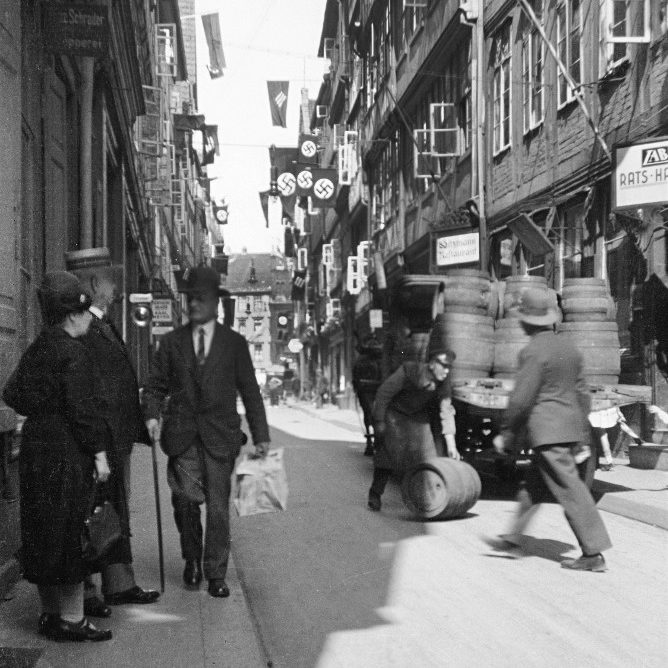
![Hanover: Dammstrasse (now Bohlendamm) looking towards Altstädter Markt during the Reichstag election campaign of 5 March 1933 Photograph from the estate of SA-Sanitäts-Sturmführer [SA medical storm leader] Dr.med. Ulrich G. Werner Heine Collection](https://zukunft-heisst-erinnern.de/wp-content/uploads/2020/04/kreuzstr_4a-589x589.jpg)
![Hanover: Altstadt [Old Town] between Marktkirche, palace and Ballhof. Street map of Hanover, scale 1:1000. Hanover city planning office, in the 1930s](https://zukunft-heisst-erinnern.de/wp-content/uploads/2020/07/schloss_markt.jpg)
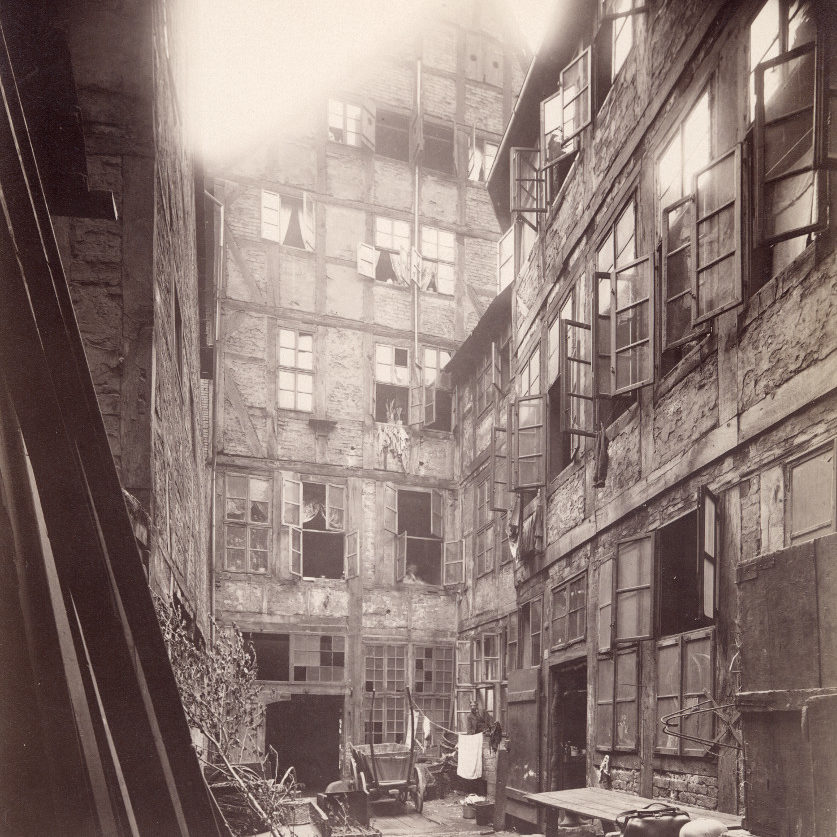
![Hanover: Photo taken by the housing office from the series of so-called slum dwellings: Dammstrasse 20 (now Bohlendamm), rear building, 2nd storey [USA: 3rd storey], 1930s. Historical Museum of Hanover](https://zukunft-heisst-erinnern.de/wp-content/uploads/2020/07/Stolperstein_Börner_3-736x736.jpg)
